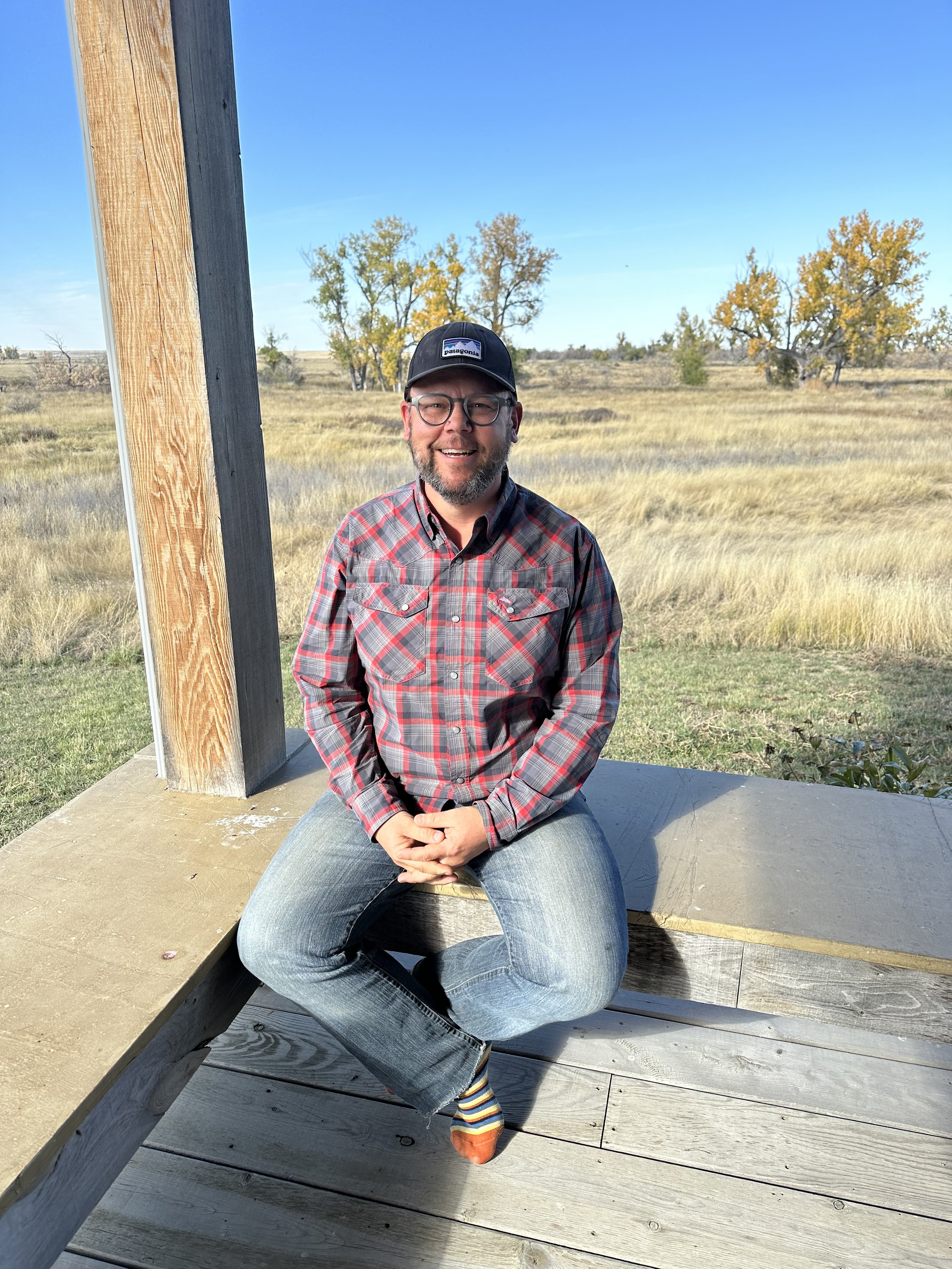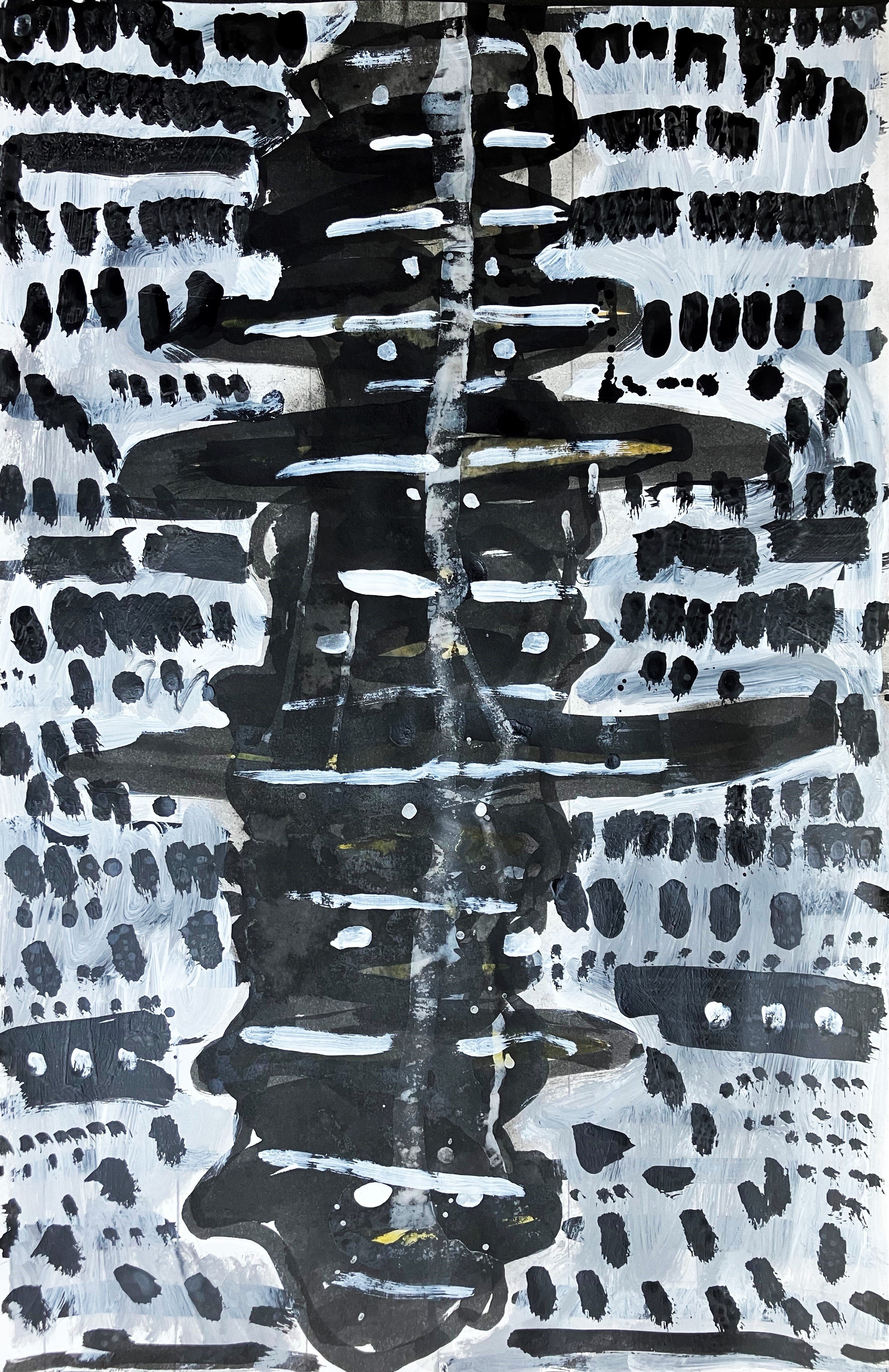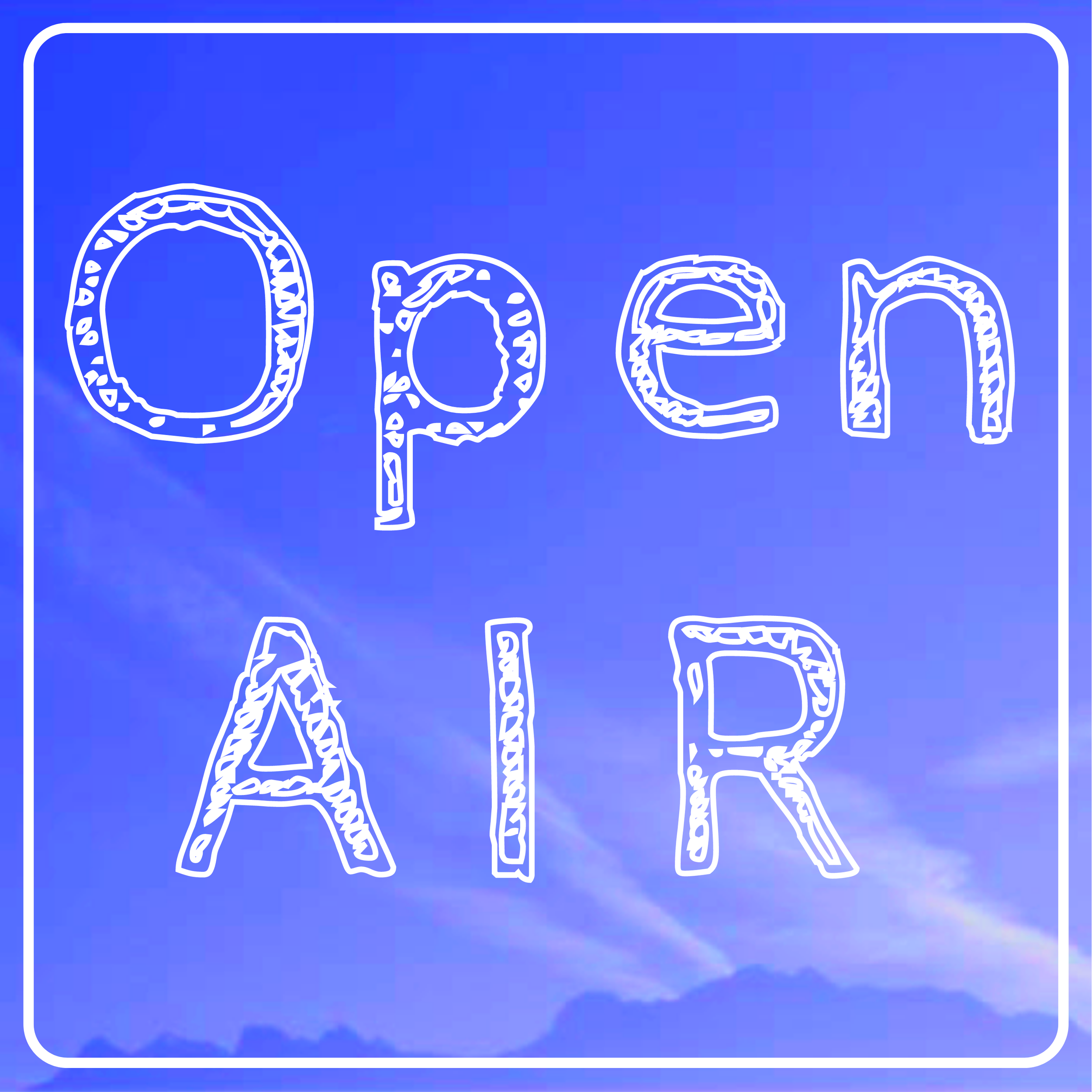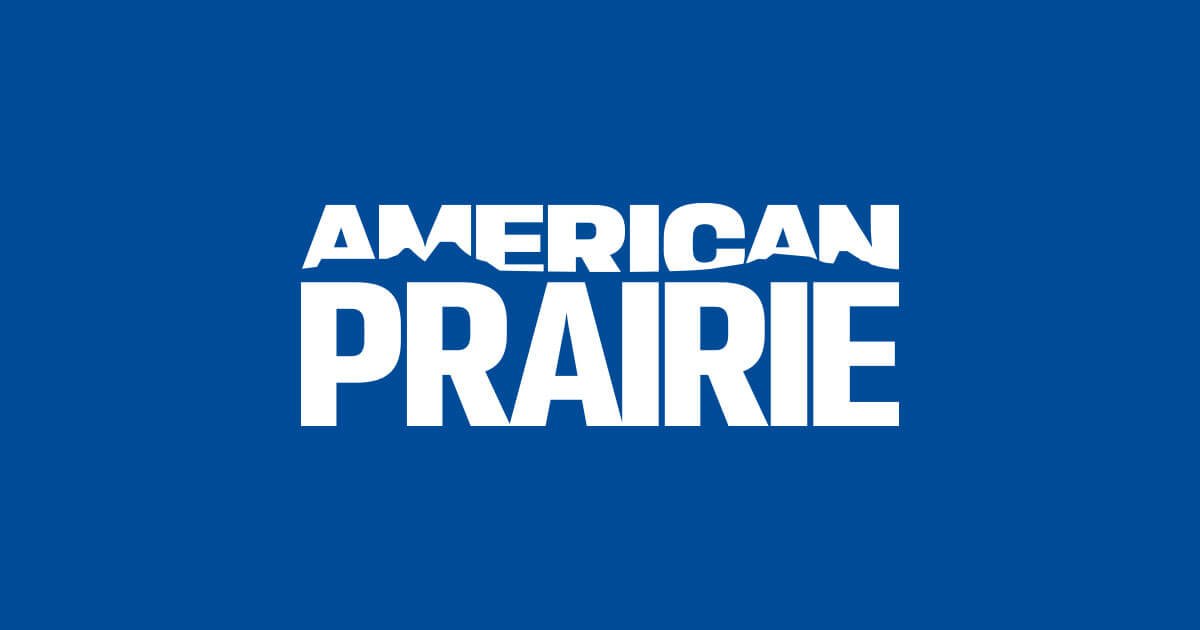Brandon Reintjes: AXIS MUNDI
“Abstract mark making is about spatial location, and sacred geometry makes the leap from location of the self to self-realization”
Fall 2023 Artist-in-Residence at
American Prairie
Brandon Reintjes at American Prairie
What keeps you returning to this subject, body of work?
I like being outside. My family’s enthusiasm for backpacking, hiking, and orienteering (a Scandinavian national pastime), and my own for hunting and fishing, provide insight into my studio practice. I try to incorporate my culturally-specific lens of being of Dutch/Germanic and Finnish/Swedish descent, as well as identifying as a Bahá’í. The abstract (and often geometric pieces) I make are often based on the act of navigating through nature. Abstract mark making is about spatial location, and sacred geometry makes the leap from location of the self to self-realization. I come from a long line of conquest, imperialism, and colonization (vikings, European emigrants, and Mormon settlers) and try to engage and disrupt this weighty inheritance and reimagine a different relationship to the natural world and the people who inhabit it. There is also a temporal aspect to maps and geolocation related to moving across terrain, covering distance, and finding a way. Maps, as a tool, chart inner dimensions just as effectively as external features. Travel, navigation, and route finding are pursuits with a spiritual component, represented by the path of the seeker. Hindi, Jain, and Tantric visual traditions ground the cosmological to the physical. Bindu, a point or drop representing the undifferentiated absolute, have a long tradition in spiritual abstraction. At heart, a bindi is similar to a Google pin, or even a compass rose—a sort of axis mundi which declares the present. The paintings I’ve been making draw from pole stars, way points, directional charts, even a graphic 3D rendering of a Viking calcite sunstone (a navigational tool preceding the compass), early manuscripts and grimoires such as the 15th century Danish/ Icelandic Galdrabók and 19th century Huld, as well as Fraktur designs (glyphs, wards, rosettes, and hexafoos), which are a form of guiding and guidance too. So, I think I keep returning to this work or this subject matter because it makes sense to me, is an accurate reflection of my interests and cultural heritage(s). All of these many influences and interests fit together in some way. The Open AIR pieces have a similar origin—in walking and noticing—even though they have a different visual appearance. They ended up being so specific to place that when we moved halfway through the residency from the Judith River to Sun Prairie, I was at a loss, and the ink drawings/paintings ended up looking completely different.
“Chimera”, 2023, acrylic on canvas, 60 x 60 inches
How was your experience as an Open AIR Artist-in-Residence?
The residency reaffirmed my identity as an artist. That’s a huge statement and gift, but it was exactly what I needed when I needed it. The word transformative gets bandied around a lot, but it was nothing less than that. I’ve participated in Open AIR since its inception and have been an American Prairie supporter for a few years, so I was intrigued to combine these interests. Likewise, the residency pulled in my other identities as a father, husband, backpacker, hunter and fisher, Baha’i, curator, etc. I’ve tended to keep each part of myself in a lane and not allow for overlap, so to fully invest in this residency as a whole person felt really satisfying.
“Prairie Drawing: Antler Shed” ink and gesso on paper, 25” x 19”, 2023 (Left)
“Prairie Drawing: Large Draw, Little Sag” ink and gesso on paper, 25” x 19”, 2023 (Right)
Walk us through the choices you make in a single piece.
The ink pieces are kind of like drawings and kind of like paintings. To make them I started with notes and sketches of things I noticed in my immediate environment or had observed on walks—trees growing along the river banks, animal bones nestled in the grass, antler sheds people found and piled on bookshelves in the yurt, animal paths through the sage, the landscape of ridges and gulches in the Missouri River Breaks area—and reduce these natural phenomenon into lines or forms. I’d prepare the paper by gridding it off, then dip a brush into ink and transfer the forms onto the paper. I’d often edit or erase the work I did if it didn’t feel like I got it the first time. I’d either erase the drawing by covering everything with white gesso or by washing the ink off in the sink or dipping the drawing in the river. Then I’d try to re-draw the idea or image again. I kept this up until I got what I was after. Often, I had multiple drawings going at the same time.
“Tantra Diptych”, 2022, acrylic, 76 x 48 inches
What was your research process during this time?
Every day the three of us on the residency (myself, Melissa Kwasny, and Delia Touché), would have coffee and breakfast together, then split up for day hikes, make art late in the afternoon, and come back together to make dinner. I wandered/wondered around in a sort of ecstasy all week—walking up the big and little Sags, walking the spines of the cliffs, along the Judith and Missouri Rivers. Every night we’d walk to watch the elk in rut and listen to them bugle. During the residency, I walked between 4-6 hours a day entirely without constraint--I never hit a property boundary or had an obligation--and used the time to meander and wonder, taking notes or making sketches. The work I made during this time is different than anything I’ve ever made before or since. They are ink paintings/drawings on gessoed paper. The images hover between abstraction and representation and are taken from the things I saw while I was there—piles of bones or antlers, a spine with ribs, feathers, animal paths, ridges and gulches, rivers. All have bifurcated forms, stemming off a main channel or trunk into secondary channels or distributaries. Somehow the pieces I made all divide along a central axis and seem like they are about mirroring, twinning, reflection, pattern, and repetition.
“Mandala (Expansion Device)”, 2022, acrylic on drop cloth, 2021, 48 x 48 inches
What are you up to now (post Open AIR)?
I moved into a new house and studio right as the residency was happening, and when I came home, I was able to inhabit this glorious space and start making paintings again. I’ve been creating work over the past year or two for an upcoming exhibition at Aunt Dofe’s Gallery in Willow Creek, MT, in May 2024 that pairs with my wife Ali’s ceramics, so I’ve been making large abstract geometric paintings. I’ve thought about trying to replicate the experience I had at American Prairie in my home studio, or trying to make ink drawing/paintings, but haven’t been able to do that yet.
“Holy Mountain”, 2023, acrylic on canvas, 42 x 46 inches
“Land_Scape” 2024, acrylic on canvas, 30 x 30 inches
Like to know more about Brandon? Visit his website!











